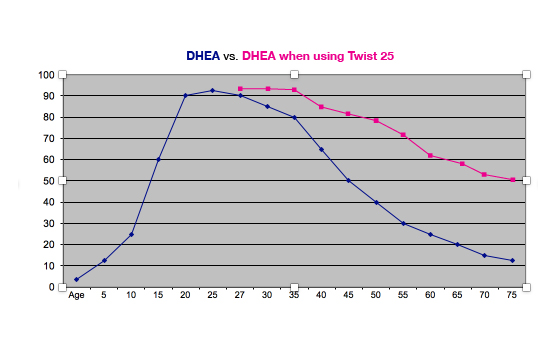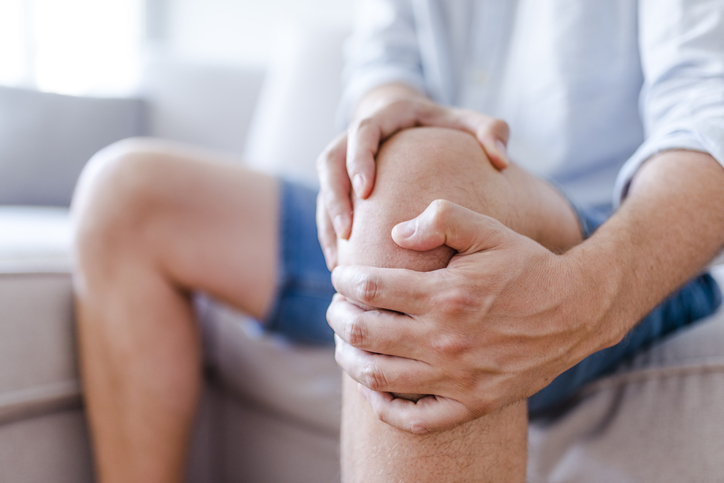Are you feeling the aches and pains of getting older? Do your knees, shoulders, or knuckles hurt? Explore this article for how DHEA and joint health work together.
Let’s face it—we’re all getting older every day. Do you feel like you have to start out slow when you get up in the morning? I do.
Modern science now brings us a new way to do something about it. Stave off those arthritic aches and pains. Not painkillers.
Do something to maintain healthy joints that we’ve had all along.
DHEA supports bone strength and cartilage to fight joint pain and arthritis
Recent medical research studies have shown that dehydroepiandrosterone (DHEA) helps reduce joint pain and fight arthritis. The medical research findings show that DHEA could help stave off the development and progression of osteoarthritis (OA) because DHEA allows better connective tissue and cartilage formation. (1)
Medical research studies continue to support maintaining DHEA levels for many reasons. However, for many, reducing joint pain is their primary reason for using Twist 25 DHEA cream.
What is DHEA?
DHEA, short for dehydroepiandrosterone, is the body’s most abundant naturally occurring prohormone. It is produced in the adrenal glands, gonads, and dermis and is a hormone precursor that only occurs in humans and upper-level primates.
Dr. Adolf Butenandt, who won the Nobel Prize for Chemistry in 1939, was the first to identify DHEA in 1931. Frequently called “the anti-aging hormone,” DHEA is a base for more than 50 hormones that are smaller or more specific carbon chain molecules in human biochemistry. As a precursor for all estrogenic and androgenic hormones, humans make DHEA naturally from birth.
DHEA is the most abundant foundation or base from which the body makes hormones.
DHEA levels increase from birth through adolescence and puberty and peak between age 20 and 25, when we are “in our prime.” Then, DHEA levels gradually decrease by about 2% per year thereafter. So, by age 35, the body produces about 20% less DHEA than when we were “in our prime” at age 25; by age 50, we produce 50% less DHEA than we did in our twenties. This gradual decline continues.

When levels peak, men and women produce more DHEA yearly until age 25. After that, DHEA levels begin to decline at a rate of about two percent per year.
One of the primary roles of DHEA is that it serves as a base hormone precursor, a prohormone. DHEA also supports the immune system, allowing for a more significant natural killer (NK) cell activity. Low DHEA levels are associated with many diseases of aging, such as cardiovascular disease, cancer, osteoporosis, depression, and arthritis.
DHEA promotes tissue rebuilding and counterbalances cortisol’s inflammatory effects. It also helps to reduce inflammation and repair connective tissue, cartilage, and bone.
DHEA For Arthritis & Joint Pain: How DHEA Helps Fight Joint Pain
The Life Extension Foundation’s medical research team explains the scientific findings here:
“The role and therapeutic potential of the hormone dehydroepiandrosterone (DHEA) in male and female rheumatoid arthritis (RA) patients is supported by a broad base of evidence.” (2)
These findings are further supported by peer-reviewed medical research performed at Washington University School of Medicine by doctors Villareal, Holloszy, and Kohrt. The research study is titled “Effects of DHEA Replacement on Bone Mineral Density and Body Composition in elderly women and Men.” The research showed that DHEA supplementation in older men and women could help improve age-related fat mass changes and bone mineral density (BMD). (3)
It’s a good idea to ask your health provider about DHEA. Suppose they need to become more familiar with the research. Please share these findings and information about Twist 25 DHEA cream. The benefits of applying DHEA to the body as a topical cream is a more beneficial way to use DHEA than oral DHEA.
Bottom Line on DHEA and Joint Health
Physicians believe that DHEA helps maintain strong bones as we get older partly because DHEA is a precursor to estrogen and testosterone, which are known to help reduce bone loss. Still, DHEA also has separate bone-preserving effects unrelated to its metabolism and other hormones. The Mayo Clinic indicates that “Evidence suggests that higher DHEA levels may be linked to higher bone density, particularly in women who have undergone menopause. Research reports that DHEA supplements may help increase bone density.” (4)
After considering these medical research findings, which show DHEA helps support bone strength, cartilage, and connective tissue formation while also reducing inflammation, it makes sense to conclude that DHEA is a great way to combat arthritis.
Fight those aches and pains! Twist 25 DHEA cream can play a part along with healthy lifestyle choices with regular movement to keep painful joints as healthy as possible.
We invite you to use Twist 25 DHEA Cream twice daily for three weeks and see for yourself.
References:
(1) http://www.biomedcentral.com/1471-2474/16/178
(2) www.lifeextension.com/Protocols/Immune-Connective- Joint/Rheumatoid-Arthritis/Page- 07
(3) www.ncbi.nlm.nih.gov/pubmed/11106916
(4) www.mayoclinic.org/drugs-supplements/dhea/evidence/hrb-20059173





